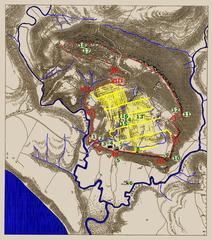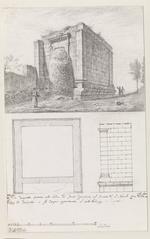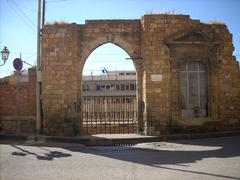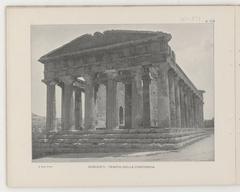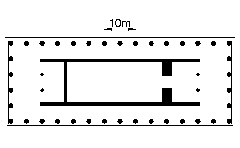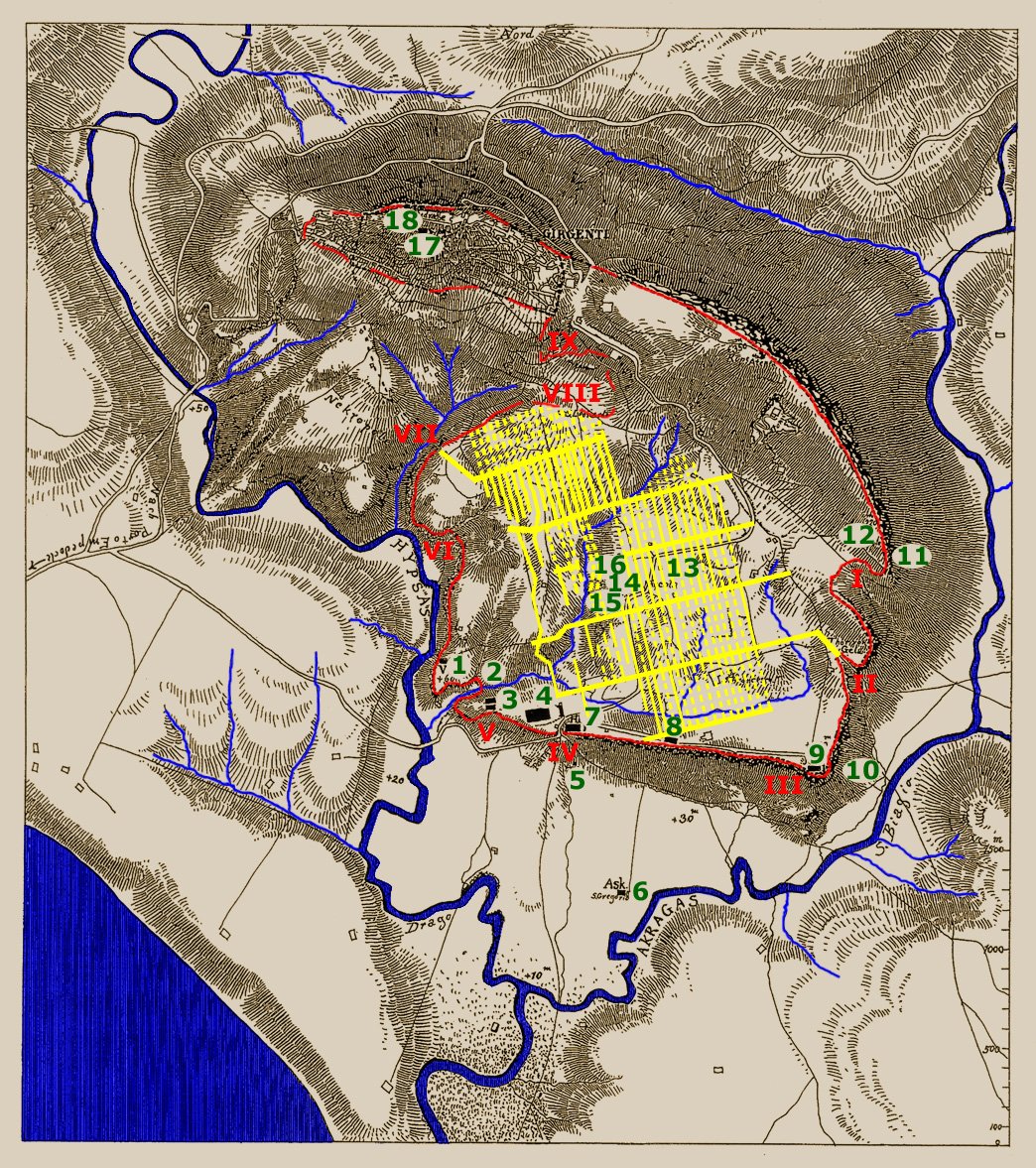
Oratorio di Falaride Visiting Hours, Tickets, and Agrigento Historical Sites Guide
Date: 14/06/2025
Introduction
Nestled within the UNESCO-listed Valle dei Templi in Agrigento, Sicily, the Oratorio di Falaride stands as a remarkable testament to the island’s layered history. This unique monument, built atop the ancient Greek ekklesiasterion, encapsulates the city’s evolution from a Greek colony to a Roman municipium and later, a medieval Christian community. The oratory’s distinctive Ionic façade, Doric entablature, and remnants of painted stucco reflect centuries of architectural and cultural adaptation. Today, it invites visitors to explore a microcosm of Agrigento’s enduring heritage, offering insights into Greek civic life, Roman religious practices, and medieval Christian devotion.
This guide provides essential information on visiting hours, ticketing, accessibility, as well as historical and architectural context to help you make the most of your visit to this extraordinary site within the Valley of the Temples.
For up-to-date details and further exploration, consult the official Valle dei Templi website and additional resources (Official Agrigento Archaeological Park Website; La Sicilia in Rete; Enjoy Sicilia).
Table of Contents
- Introduction
- Historical Background
- Architectural Features and Site Layout
- Cultural and Religious Significance
- Integration within the Valle dei Templi and UNESCO Status
- Preservation and Research
- Visiting Information: Hours, Tickets, and Accessibility
- Nearby Attractions and Visitor Tips
- Frequently Asked Questions (FAQ)
- Conclusion
- References
Historical Background
The Oratorio di Falaride is rooted in the history of Akragas (now Agrigento), one of Magna Graecia’s most illustrious cities, founded in the 6th century BCE (travel.thewom.it). The site originally served as the location of the ekklesiasterion, a semicircular public assembly space constructed in the 4th–3rd centuries BCE, with nineteen rows of stone seating for civic gatherings. In the late Republican period of the 1st–2nd century BCE, the Roman sacellum (small temple) known today as the Oratorio di Falaride was built atop these Greek foundations (La Sicilia in Rete).
During the Middle Ages, the oratory was transformed into a Christian chapel dedicated to the Virgin Mary, reflecting the continuity and adaptation of sacred spaces in Agrigento through successive cultural and religious shifts.
Architectural Features and Site Layout
Podium and Access
The Oratorio di Falaride sits on a raised podium approximately 1.6 meters high, accessed by a frontal staircase—a hallmark of Hellenistic and Roman religious architecture (Sights.Seindal; Guidaturisticaagrigento).
Plan and Dimensions
The building is compact, featuring a rectangular cella (about 6 x 5.3 meters) and a pronaos (2.5 meters deep), smaller than the grand Doric temples nearby but reflective of Roman provincial religious buildings (Sights.Seindal).
Prostyle Tetrastyle Façade
Originally, four Ionic columns graced the entrance, supporting a Doric entablature with triglyphs and metopes—an eclectic blend characteristic of late Hellenistic Sicilian style. The column bases remain visible (SmartEducationUnescoSicilia; EnjoySicilia).
Atrium, Altar, and Adjacent Features
The pronaos served as an atrium, leading to the inner cella. An altar stood on the east front, aligned with the axis of the earlier Greek ekklesiasterion, and a semicircular exedra likely hosted statues or ritual gatherings (SmartEducationUnescoSicilia).
Medieval Modifications
In its medieval phase, the oratory was converted into a Christian chapel. A pointed arch entrance, ribbed cross vault, lancet window, and eastern apse were added, some later removed during 18th–19th-century restorations (EnjoySicilia).
Materials and Construction
Local limestone, typical of the Valley of the Temples, was used in construction. The masonry consists of well-cut blocks laid without mortar, finished with painted stucco highlighting Roman polychrome aesthetics (Guidaturisticaagrigento).
Cultural and Religious Significance
The Oratorio di Falaride epitomizes Agrigento’s cultural syncretism—melding Greek, Roman, and Christian elements. Its transformation from a civic assembly space to a Roman temple and, later, to a Christian oratory reflects the evolving spiritual and communal life of the city. While its name refers to the ancient tyrant Phalaris, this association is legendary rather than historical (Wikipedia: Le porte di Agrigento). The site’s enduring sacred role, alongside archaeological discoveries of votive figurines and ritual objects, underscores its long-standing religious importance (travel.thewom.it).
Integration within the Valle dei Templi and UNESCO Status
Situated within the Valle dei Templi archaeological park, the Oratorio di Falaride is part of a landscape renowned for ancient Greek temples and later Roman and medieval monuments. The area has been a UNESCO World Heritage Site since 1997 (UNESCO), highlighting the continuous occupation and cultural evolution of Agrigento. Its proximity to the Museo Archeologico di San Nicola enhances its educational value.
Preservation and Archaeological Research
Ongoing preservation and archaeological research efforts have stabilized the oratory’s structure, protected its decorative elements, and improved public access. Non-invasive survey methods and stratigraphic analysis continue to clarify its chronology and relationship to surrounding sites, in accordance with UNESCO guidelines (UNESCO).
Visiting Information: Hours, Tickets, and Accessibility
Opening Hours
- General Hours: Daily, 8:30 AM – 8:00 PM (last admission one hour before closing). Hours may vary seasonally; check the official website before your visit.
Tickets & Admission
- Standard Ticket: €10
- Reduced: €5 (EU citizens aged 18–25, FAI members)
- Children under 18: Free
- Combined Tickets: Available for access to the Archaeological Museum and other sites
- Where to buy: Online via the official website or at the park entrance
Accessibility and Facilities
- Paths: Paved and well-marked, but with some uneven terrain due to the site’s antiquity
- Wheelchair Access: Partial, with assistance available—contact the visitor center for details
- Amenities: Restrooms, refreshment stands, shaded areas, and parking (max €5/day); electric shuttles available for a fee (voyagetips.com)
Nearby Attractions and Visitor Tips
- Other Temples: Concordia, Juno, Heracles, and the Kolymbetra Garden
- Museo Archeologico di San Nicola: Rich artifact collections contextualizing the site
- Ancient Theater: Recently uncovered, offering new insights into Akragas’ civic life
- Agrigento’s Historic Center: Traditional Sicilian cuisine and charming architecture
- Festivals: The annual Almond Blossom Festival (February–March) celebrates local heritage (goaskalocal.com)
Tips:
- Visit early or late in the day for optimal lighting and fewer crowds
- Wear comfortable shoes and bring sun protection
- Consider a guided tour or the official app for a richer experience
Frequently Asked Questions (FAQ)
Q: What are the Oratorio di Falaride visiting hours?
A: Generally 8:30 AM to 8:00 PM, with last admission one hour before closing. Always confirm on the official website.
Q: How can I purchase tickets?
A: Online through the official park website or at the entrance.
Q: Is the site accessible for people with disabilities?
A: Partial accessibility; contact the visitor center for specific assistance.
Q: Are guided tours available?
A: Yes, both on-site and through the park’s official app.
Q: Can I take photos?
A: Yes, but please do not touch or climb on the ruins.
Conclusion
The Oratorio di Falaride offers a unique lens onto Agrigento’s multi-layered past, blending Greek civic life, Roman religious architecture, and medieval Christian worship within one compact monument. Its location in the Valle dei Templi, alongside well-preserved temples and museums, makes it an essential stop for anyone interested in Sicily’s deep heritage. With practical visitor amenities, accessible pathways, and a wealth of historical context, the oratory is both a symbol of resilience and an invitation to explore the enduring stories of Agrigento.
To enhance your experience, consider using the Parco Valle dei Templi app or the Audiala app for guided tours, maps, and real-time updates. For further resources and updates, always consult the official websites.
